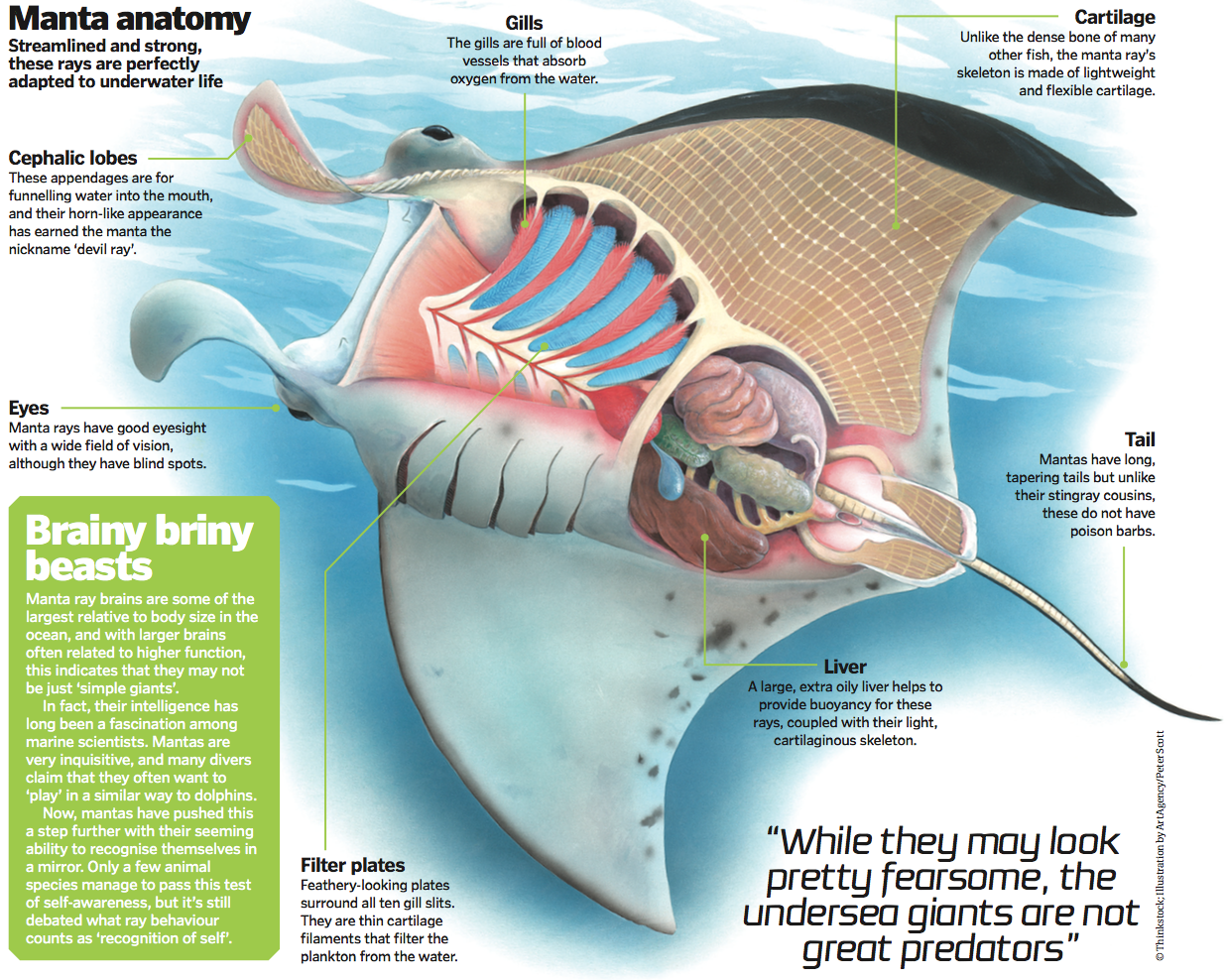Meet the manta ray: Large enough to cover your car, they’re just gentle ocean giants
Cruising both the open oceans and the sunlit tropical shallows, a manta ray cuts a pretty imposing silhouette in the water.
With undulating pectoral fins that look like gargantuan wings, these creatures can span in excess of seven metres. There are two distinct supersized species: Manta birostris, the giant oceanic manta ray, and Manta alfredi, the reef manta ray.
The giant oceanic manta ray is migratory, and uses the ocean currents as highways to traverse huge distances in search of the best feeding grounds. The smaller resident reef manta prefers to stay closer to shallow waters, swimming near coastal reefs in the tropics and subtropics.Manta rays are solitary creatures, and only really come together to breed. These interactions can often begin at feeding areas, or at ‘cleaning stations’ – areas of coral reef where fish and shrimp feed on parasites on the manta’s skin.
While they may look pretty fearsome, the undersea giants are not great predators, instead choosing to feed on plankton – tiny microscopic creatures suspended in the water. The rays will open their mouths wide, and let the water flow over their gills as they filter out tasty morsels. Mantas will eat around 13 per cent of their body weight each week. When the plankton is just right, feeding can get acrobatic, with the massive rays making loop-the-loops and corkscrew spirals in the water to ensure they get their fill.
For more science and technology articles, pick up the latest copy of How It Works from all good retailers or from our website now. If you have a tablet or smartphone, you can also download the digital version onto your iOS or Android device. To make sure you never miss an issue of How It Works magazine, subscribe today!
Other articles you may like:
Coral Polyps: The Building Blocks of Coral Reefs






